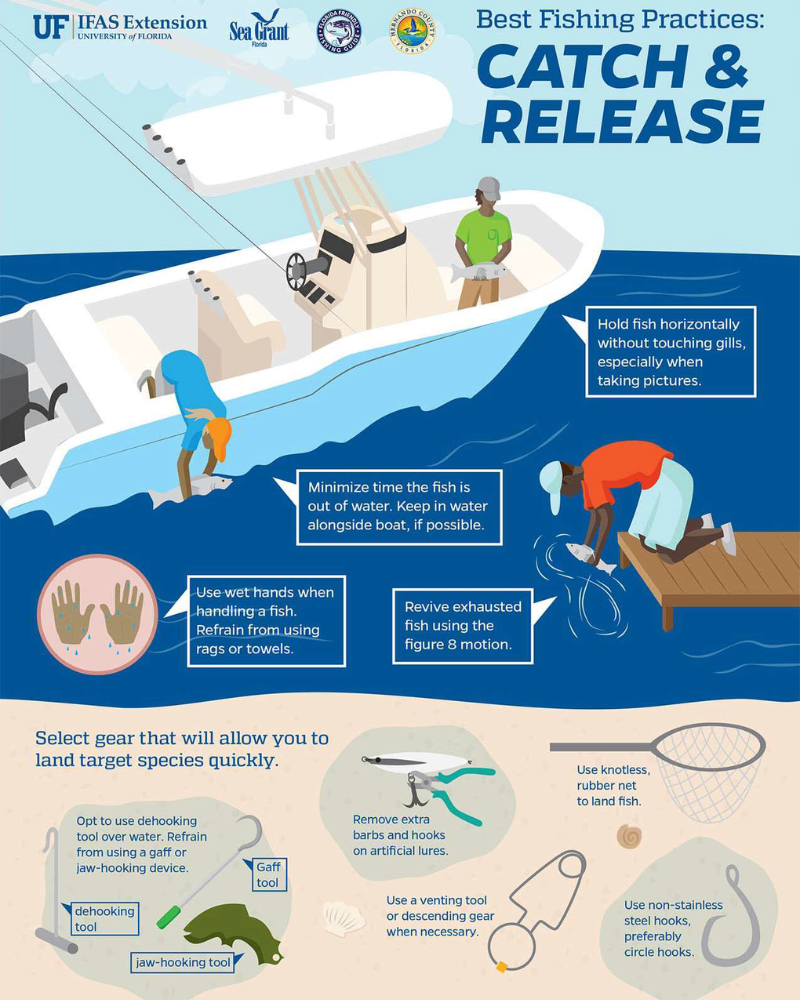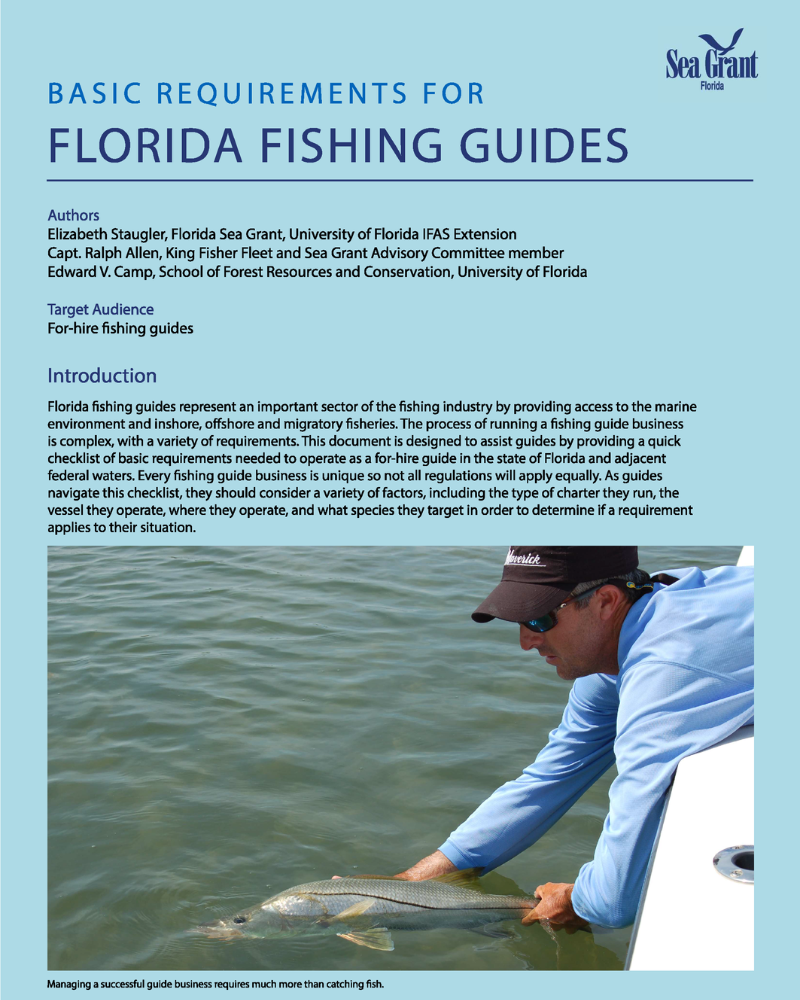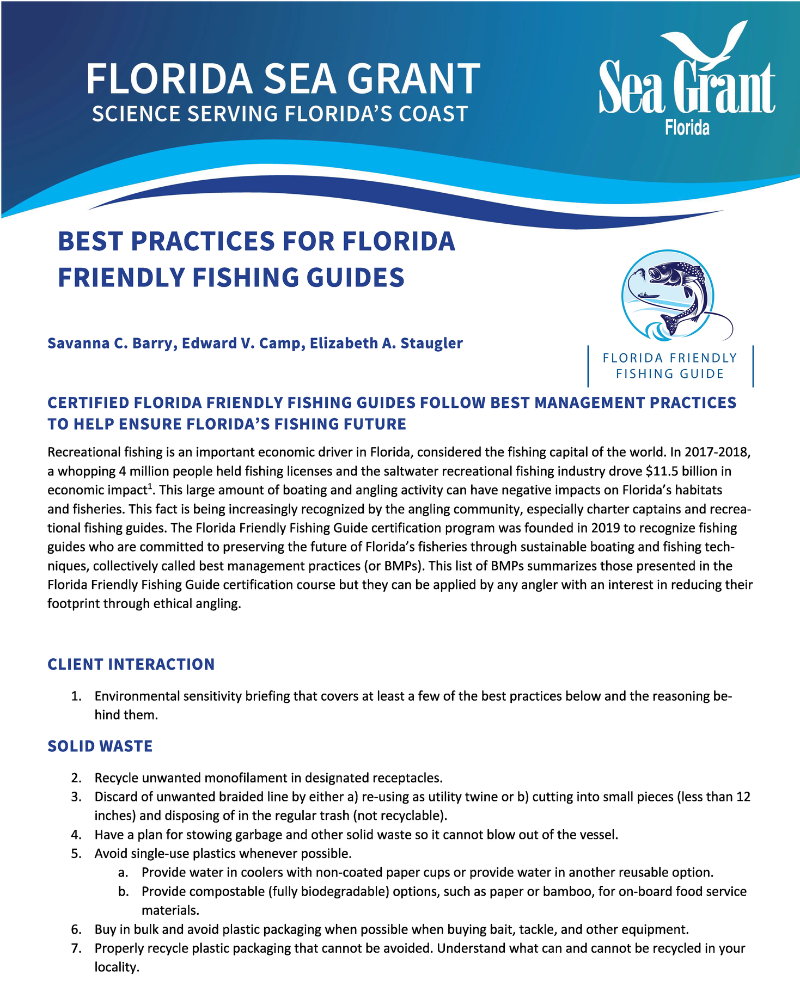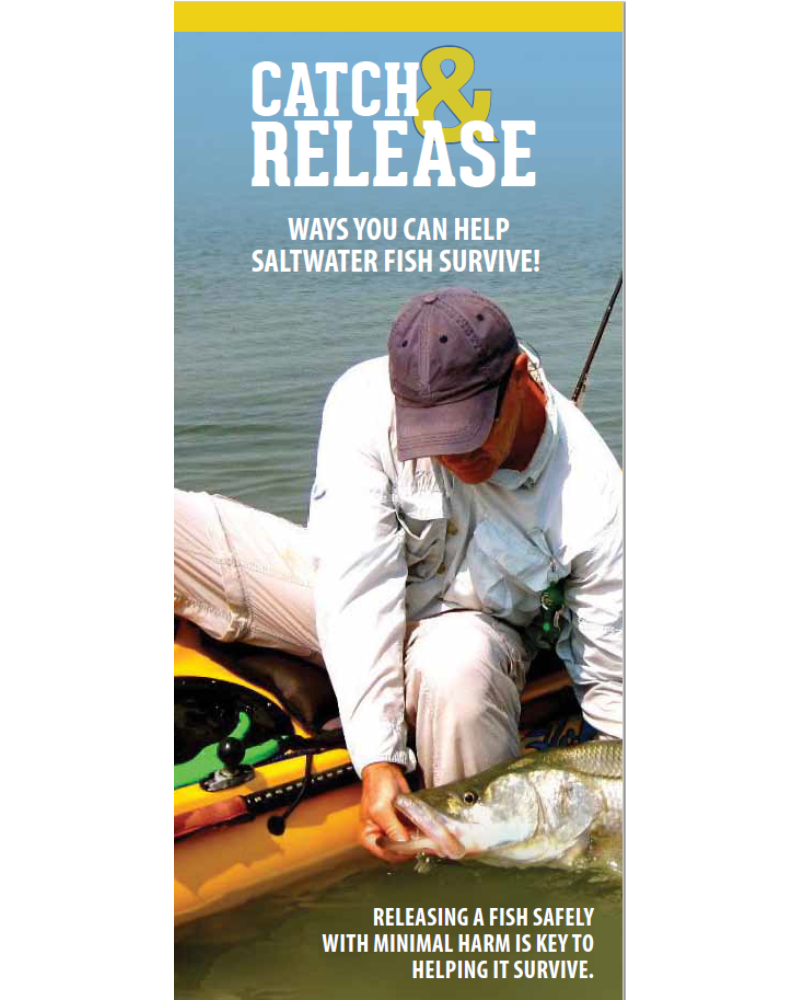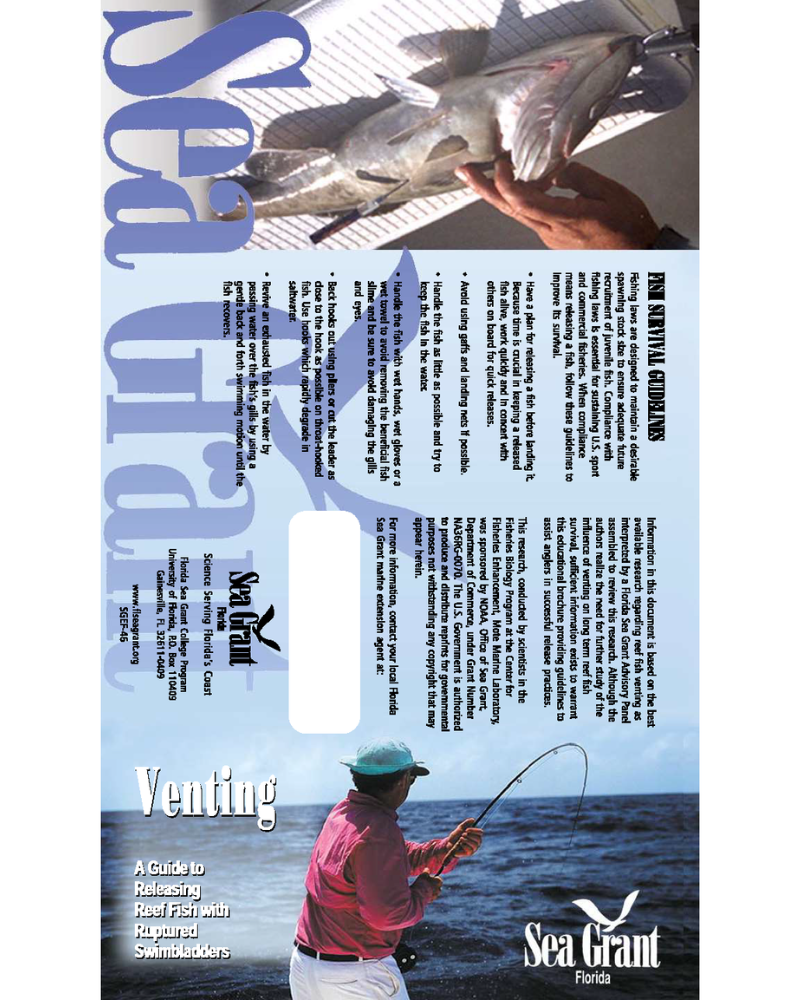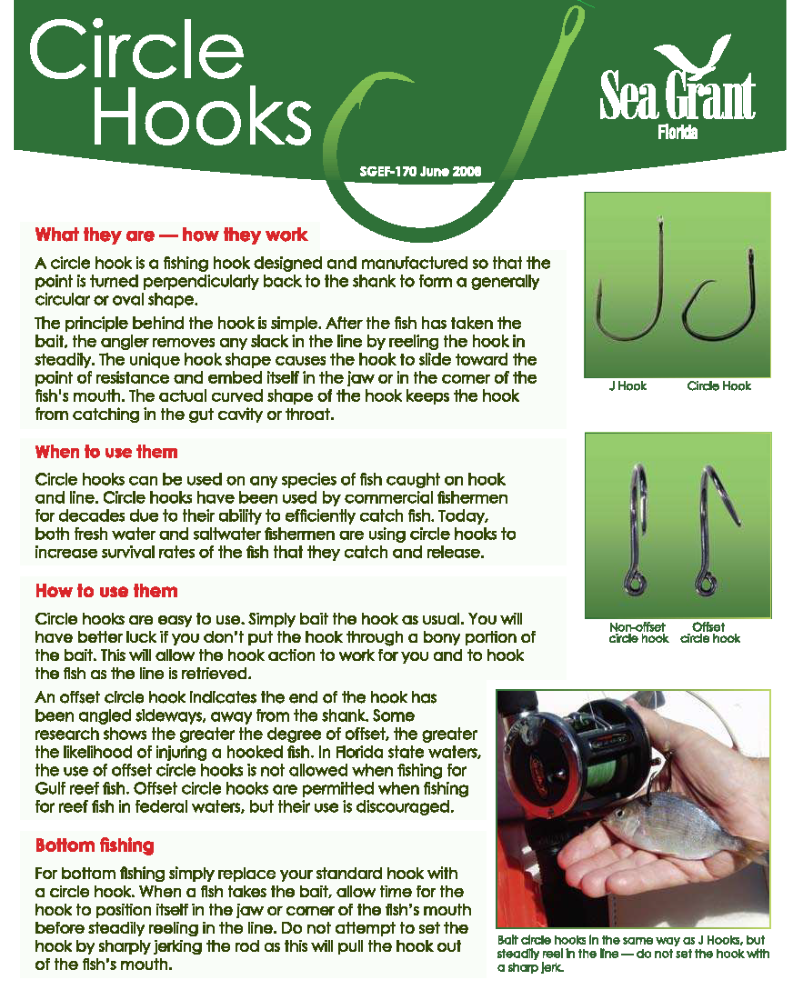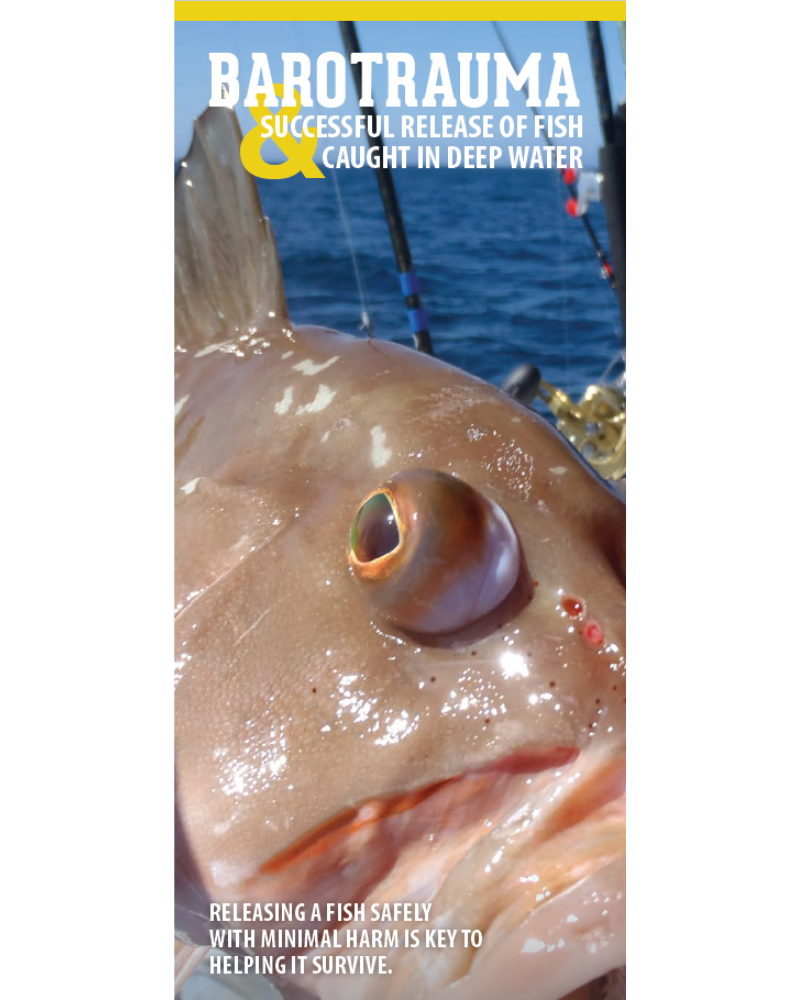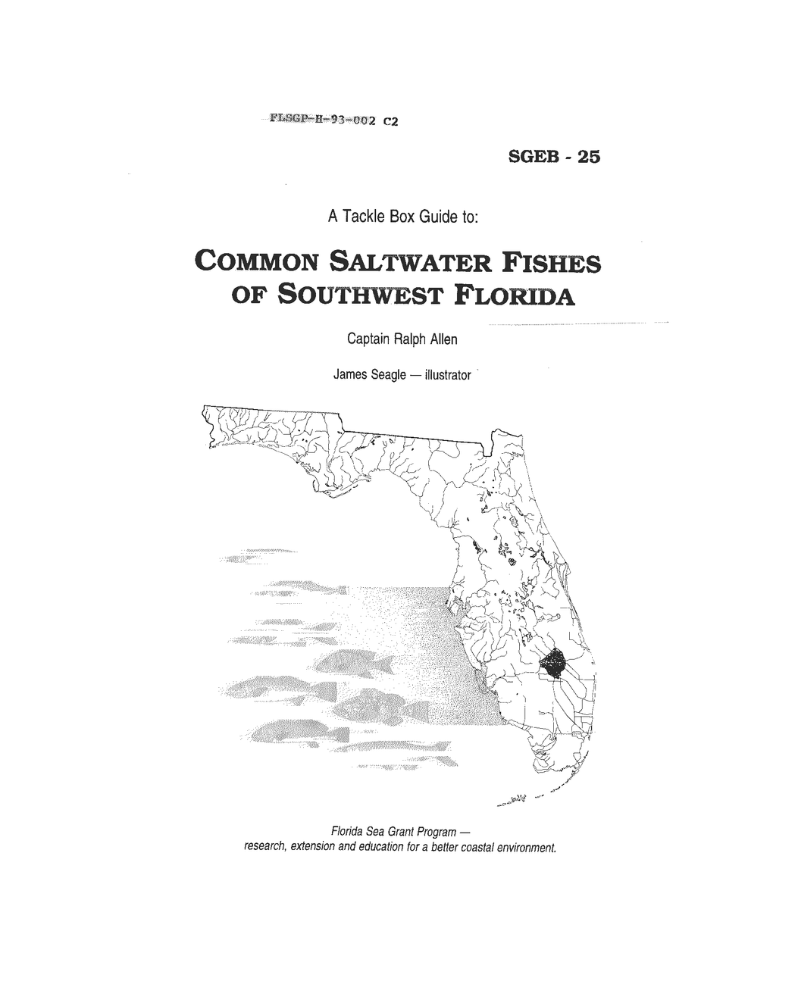Catch and Release Fishing
Protecting Florida Fishing
To ensure the sustainability of Florida’s fisheries resources, Florida Sea Grant provides research and information to educate recreational anglers on sustainable fishing practices that reduce discard mortality of fish that are caught and released.
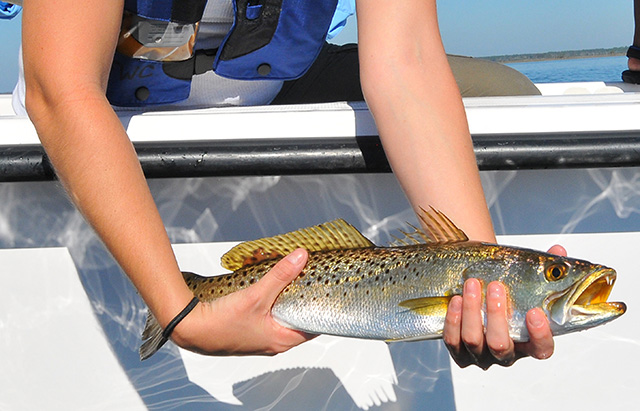
Credit: Florida Fish and Wildlife Conservation Commission
Releasing a fish safely with minimal harm is key to helping it survive. Sustainable fisheries rely upon educated anglers and effective management. Recreational fishermen often release fish for a variety of reasons—for the enjoyment of the sport (with no intention of making their catch a meal) or because the fish may have harvest limits due to fishing regulations that aid in maintaining a sustainable fishery.
Discard mortality is a major issue, diminishing the effectiveness of regulatory measures. Many problems tied to fish release can be avoided using special tackle and techniques, however, fishermen have to know how and when to use them.
Why Catch and Release?
Saltwater recreational fishing in Florida generates $9.2 billion in economic impact and supports tens of thousands of jobs. By adopting a few simple best practices and tools, recreational anglers can greatly increase the chances that the fish we release live to grow, spawn and be caught again.
For every catch
Best practices for catching:
- Target open species
- Fish in shallow and cooler waters
- Limit fight time
- Use non-stainless, steel circle hooks
Best practices for releasing:
- Use a de-hooking device
- Use a descending device or properly vent if a fish displays signs of barotrauma
- Minimize handling
Best Practices For Catch and Release
Choosing the best catch and release practice to use while fishing can vary dependent on a variety of factors such as type of species, size of fish, depth in which the fish was caught and angling method. However, universal policies that should always be practiced are:
- landing the fish as quickly as possible,
- handling the fish as little as possible, and
- returning the fish back to water as soon as possible.
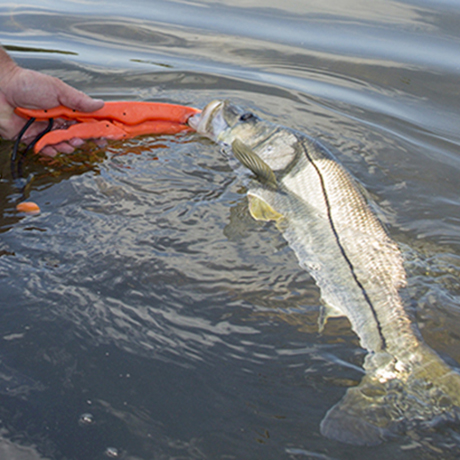
Research has shown that you can significantly increase the survival rate of fish you catch with proper handling during catch and release. Fish should be handled gently and as little as possible. Returning them to the water as quickly as possible minimizes stress to the fish. Minimizing time out of the water has been shown to be one of the most critical survival factors.
To reduce the amount of time the fish spends out of water, determine what you will do with a fish prior to having it on the boat as well as assign roles to the fishermen on the boat, who will be the person to net the fish or be ready to snap a photo when your catch is landed.
Tips:
- Use appropriately sized tackle to land a fish quickly. Using gear that may be too light may lead to excessive exhaustion, which could result in the death of the fish or weaken it.
If a fish completely swallows the hook and is not easily removed, consider cutting the line as close as you can to the hook to prevent damage caused by making it more vulnerable to predators.
There are a variety of revival techniques that can be used to to resuscitate an exhausted fish and give them a boost to resume normal behavior. With species such as snook or redfish moving the fish face first in the water in a figure eight motion or can allow oxygenated water to pass over their gills and be beneficial to their release. With smaller pelagic species such as tuna and mackerel, lightly tossing them into the water at a face first angle may help jump start their system. Large fish like tarpon and sailfish may be best revived by contentious movement such as putting your boat and gear and allowing water to pass through their open mouths and gills.
- When handling a fish, use wet hands – never with a towel – to prevent removal of the fish’s protective slime coating.
If the fish will be handled on the deck of the boat, ensure the surface is moist to reduce stress caused by heat and to help retain the protective slime coat.
- It is best for the fish to take pictures of it while still in the water.
This is especially true for larger fish that may have their mouths or internal organs injured from pulling them over the side of the boat. Additional some species have regulations in place that does not allow a fish of a certain size to be removed from the water or perform actions that may delay release.
- If a fish must be lifted from the water, always support its weight horizontally and never lift a fish by its jaw – this can injure the fish so it cannot feed normally and/or harm its internal organs.
- Do not touch the gills and never hold a fish by its gill cover; This can damage the delicate gill lamellae the fish uses to breathe.
- Do not poke or attempt to pick up a fish by their eyes; The process can damage the organs.
- Only gaff a fish when you are sure it is legal to harvest and you intend to keep it. Bottom lip gaffs can damage the mouth and impede normal feeding strategies especially with species that may use suction or inhalation to gulp down their prey.
When possible use tools like dehooking devices that can be performed in the water or over the side of the boat without even contacting the fish. These tools are great to use for species that may have sharp barbs for defense like catfish and reduce extra slimey hands!
Choose a knot-less, rubber coated net with approtiate for landing a fish when possible.
Lip grip devices can be used without damage to the fish if they are not lifted by their mouths without proper support of their body. These devices can also be used in water revival processes effectively especially fish that have teeth and cause injury or discomfort to your hand.
- If a fish is exhausted, revive it before releasing by holding the fish with the head pointed downward in the water and moving the fish back and forth to pass water over its gills until the fish is able to swim unassisted.
- Release should be done in the water if possible and always head first.
- Fish should be measured before keeping to ensure compliance with fishing regulations. To learn how to accurately measure fish, consult FWC.
Watch: Handling
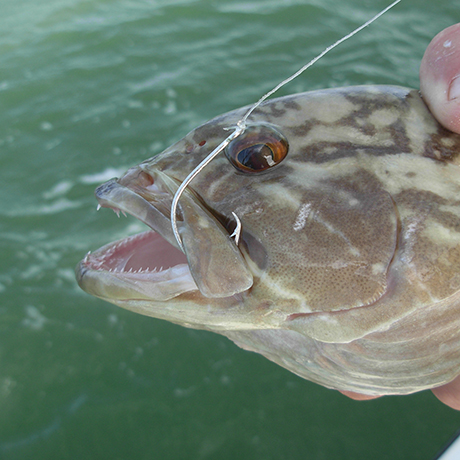
Credit: Florida Sea Grant
A circle hook is a fishing hook designed so that the point is turned perpendicular to the shank to form a circular shape. The principal advantage to using circle hooks is that fish are less likely to become deep-hooked; Research has found that circle hooks are more likely to hook a fish in the mouth rather than the gut, making them easier to remove and reducing harm to the fish.
The principle behind the hook is simple: after the hook has been swallowed the fisherman applies pressure to the line, pulling the hook out of the stomach. The actual curved shape helps prevent the hook from catching in the gut cavity or throat. Instead, the hook slides toward the point of resistance and embeds itself in the jaw or in the corner of the fish’s mouth.
Watch: Circle Hooks
Read More: Circle Hooks
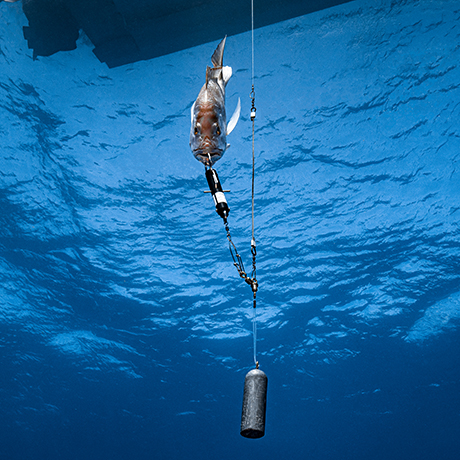
Credit: Return ‘Em Right
Venting and descending are techniques that are used to help alleviate the symptoms barotrauma on deck when fish are reeled up from deeper depths. Using these methods helps give your released catch the best chance on being enjoyed another day.
As of July 15, 2020, all recreational, commercial, and for-hire vessels are required to have a working descending device on-board and readily available when fishing for any of the fish in the snapper-grouper fishery management unit in federal waters of the Atlantic Ocean from North Carolina to Florida.
Tackling Barotrauma During Deep-Water Release
Barotrauma is a pressure (baro) related injury (trauma) that fish experience when reeled up from depth.
Barotrauma typically occurs in depths of 50 feet or greater, but can occur in shallower depths depending on the species caught. As fish are reeled up from deep water, gases in the body cavity and internal organs expands, often displacing the organs and leaving the fish severely bloated. Watch the video series below to learn more.
Anglers in the Gulf of Mexico can receive free training and release gear to help reef fish survive barotrauma by visiting Return ‘Em Right.
State & Federal Regulations
Fishing regulations are complex and change regularly based on new management measures and as fisheries open and close once annual catch limits have been reached. Always check state and federal regulations for the area that you plan to fish.
Explore our resources
Looking for answers or resources on catch and release fishing? Explore our products below or contact your local Florida Sea Grant agent.
